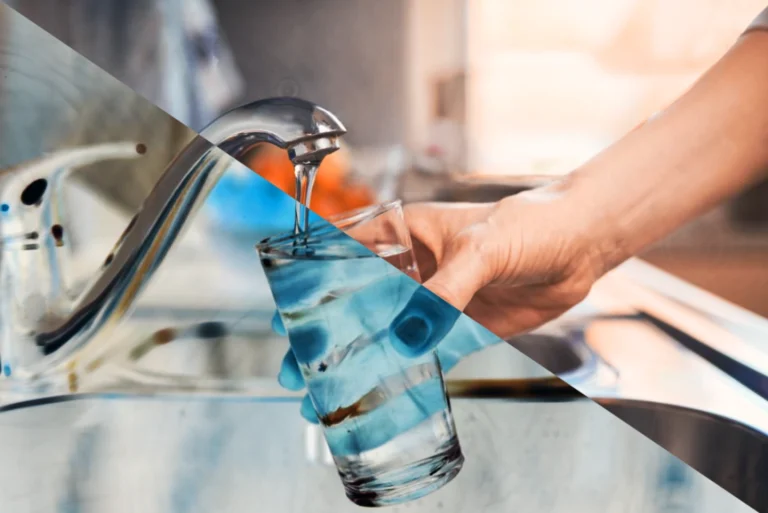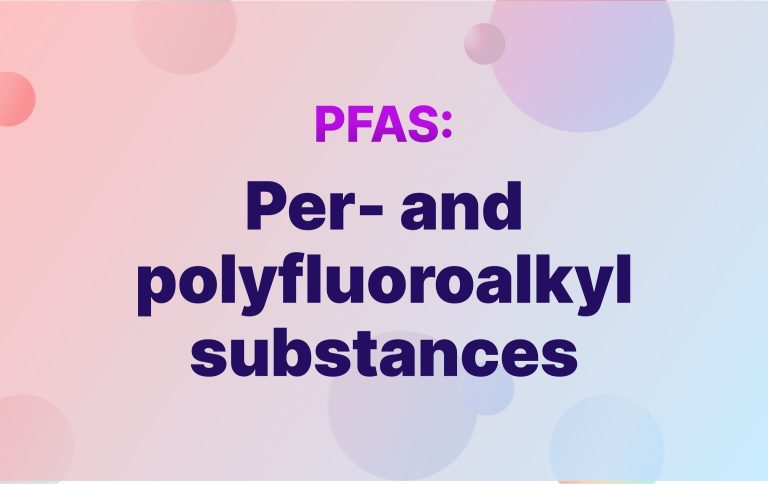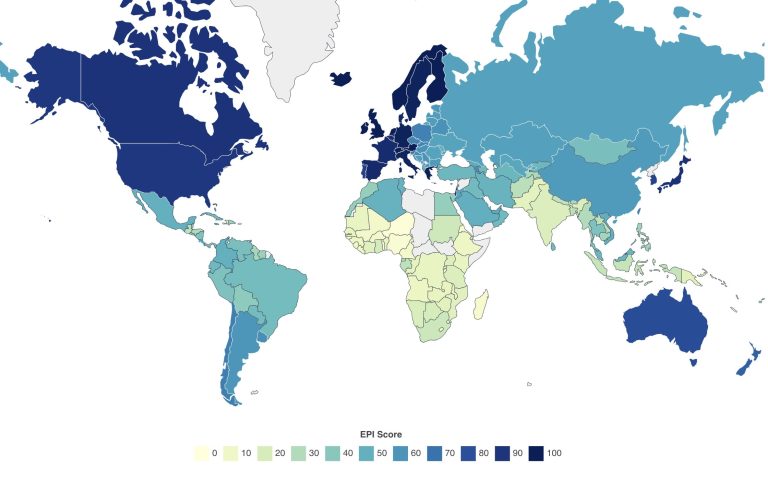What Are PFAS and PTFE?
PFAS stands for per- and polyfluoroalkyl substances. They are a group of man-made chemicals that have been used in various industries since the 1940s. The PFAS group includes over 4,700 synthetic chemicals such as PFAS and PTFE, found in everyday items like cookware, clothing, and firefighting foam. Their resistance to heat, water, and oil makes them incredibly versatile. However, this has raised environmental and health concerns due to their persistence and bioaccumulation.
PTFE (Polytetrafluoroethylene), also known as Teflon, a term that highlights the difference between Teflon and PTFE is a specific type of PFAS better known by its trade name, Teflon. It is renowned for its non-stick properties.
PTFE is used in various applications, from cookware to industrial uses and medical devices. Despite its benefits, the production and disposal of PTFE items can include emissions that release harmful PFAS, contributing to environmental impact and disposal of PTFE items can release harmful PFAS into the environment. This contributes to pollution and health risks.
Exposure to PFAS can lead to several health problems, including:
- Reduced kidney function
- Metabolic syndrome
- Thyroid disruption
- Adverse pregnancy outcomes
These health concerns underline the need to understand and mitigate the risks associated with PFAS exposure. (source: EPA)
Historical Development and Discovery of PTFE
Dr. Roy Plunket accidentally discovered PTFE in 1938 while working for DuPont. He was experimenting with gases for refrigerant production and noticed that a canister of tetrafluoroethylene gas had stopped flowing, although it was still full. Inside, he found a white powder that was incredibly slippery. This substance turned out to be PTFE. It was patented in 1941 and became commercially known as Teflon. Teflon’s ability to withstand high temperatures, resist chemicals, and its slickness made it popular across various industries.
The discovery of PTFE marked a significant moment in materials science, marking the history of PTFE. It introduced features important for use in aerospace, electronics, and household products. However, the environmental and health impacts of PTFE and broader PFAS compounds have led to increased regulatory scrutiny. There’s also a push for safer alternatives.
Difference Between PFAS and PTFE
Chemical Structure and Properties
Polytetrafluoroethylene (PTFE) belongs to the PFAS family, answering the common questions: does Teflon have PFAS? Yes, since Teflon is a brand name for PTFE, a type of PFAS. It comprises carbon and fluorine atoms. This combination grants PTFE unique properties such as high heat resistance and a slippery surface. Such properties make PTFE useful for non-stick cookware and industrial parts. It’s important to distinguish PTFE, a fluorinated polymer, from the broader PFAS category from the broader PFAS category, which includes a variety of compounds with different chemical structures and properties. While PTFE is a type of PFAS, not all PFAS are PTFE. PTFE’s molecular structure of carbon and fluorine accounts for its distinct properties. The physical properties of PTFE include:
| Property | Temperature in Celsius |
| Melting Point | 342°C |
| Boiling Point | 260°C |
These properties highlight PTFE’s suitability for high-performance applications in extreme conditions (Teflon Vs PTFE… What Really Are The Differences?; Polytetrafluoroethylene (PTFE)).
Applications
PTFE is known for outstanding physical traits used in both industrial and consumer domains. Its applications include electrical insulation, mechanical parts like gears and bearings, and cookware coatings. On the other hand, PFAS find use for their chemical properties, such as water and grease repellence in consumer goods like fabrics and food packaging. PTFE’s versatility and performance in extreme conditions are well-demonstrated through its applications.
Environmental Impact and Health Concerns
The environmental impact of PTFE differs significantly from other PFAS. PTFE is stable and generally poses fewer ecological concerns, as it does not easily degrade into harmful substances under normal conditions. However, PFAS are known for their environmental persistence and potential to accumulate in living organisms, leading to serious health risks such as:
- Imunosuppression
- Increased risk of childhood infections
- Airway and throat infections
- Diarrhea
- Limited evidence linking to cancer in high-exposure manufacturing areas
- Insufficient data on neurodevelopmental impacts
The persistence of PFAS in the environment raises concerns among environmentalists and regulators (EPA’s understanding of PFAS health risks).
Regulatory Scrutiny
Regulatory bodies worldwide, including EU restrictions, are increasingly scrutinizing PFAS compounds due to their environmental and health risks. Efforts to restrict or ban their use are underway. While PTFE is part of the PFAS group, it has not attracted the same level of concern, thanks to its stable and inert nature when managed correctly. Nonetheless, the production and disposal of PTFE products can still raise PFAS-related concerns. This situation calls for careful consideration and management to mitigate potential risks (The Teflon chemical PTFE is often touted as a safe cousin of toxic PFAS. But is it really?).
Understanding the differences between PTFE and PFAS is crucial for informed decisions about product use and its environmental and health impacts.
PFAS Chemicals vs PTFE Safety Analysis
This section explores the safety profiles of PFAS and PTFE. It covers the health and environmental concerns related to these substances.
Health Impacts of PFAS
PFAS chemicals are persistent and linked to several health issues:
- Cancer Risk: Studies associate PFAS compounds like PFOA and PFOS with increased risks of kidney and testicular cancers. The C8 Science Panel found a higher risk of testicular cancer with PFOA exposure. DCEG researchers found associations with several cancers, including kidney and testicular.
- Liver Damage: PFAS can disrupt lipid metabolism and cause liver toxicity. Research shows a correlation between PFAS exposure and liver conditions such as NAFLD.
- Adverse Birth Outcomes: High PFAS levels in pregnant women have been linked to lower birth weights and shorter gestational ages. Research supports associations between PFAS exposure and adverse pregnancy outcomes.
- Endocrine Disruption: PFAS may interfere with hormone activity, affecting reproductive health. Evidence points to reproductive toxicity and endocrine disruption.
- Immune System Effects: Studies suggest PFAS can weaken immune responses. This raises concerns about increased infection susceptibility and reduced vaccine effectiveness.
Environmental Impacts of PFAS
PFAS have a profound impact on the environment:
- These chemicals can contaminate drinking water, soil through soil contamination, and air.
- PFAS are persistent, bioaccumulate in wildlife, and threaten ecosystems.
- Their slow degradation rate allows accumulation, posing long-term health risks to humans and biodiversity.
- PFAS pollution comes from industrial processes, waste streams, and disposal sites.
- Environmental problems include local waterways contamination and soil pollution near disposal areas. They also pose risks to aquatic life and ecosystems.
Health Risks Associated with PTFBs
PTFE is generally safe under normal use, but specific conditions pose risks:
- Thermal Decomposition: PTFE can break down at temperatures above 500°F (260°C). This releases fumes that can cause polymer fume fever—a temporary illness.
- Environmental Concerns: PTFE’s life cycle, from production to disposal, can contribute to PFAS pollution. Chemsec’s analysis shows PTFE might emit PFAS during these phases.
PFAS are linked to significant health concerns. PTFE is safer if not overheated or improperly disposed of. However, PTFE production and disposal can release PFAS, raising environmental concerns.
Safer Alternatives to PTFE and PFAS
Consider these alternatives for safer options:
- Ceramic Cookware: PFAS and PTFE-free, resistant to high temperatures.
- Cast Iron: Durable and naturally non-stick when seasoned. Free from synthetic chemicals.
- Stainless Steel: Ideal for cooking without the risk of chemical leaching.
- Silicone Bakeware: Flexible, non-stick, and PFAS-free. Suitable for high-temperature baking.
- Glass Cookware: Chemical-free and safe for cooking and baking.
Choosing alternative materials like ceramic, cast iron, stainless steel, silicone, and glass offers non-toxic alternatives to PFAS and PTFE. They align with health and environmental safety priorities.





